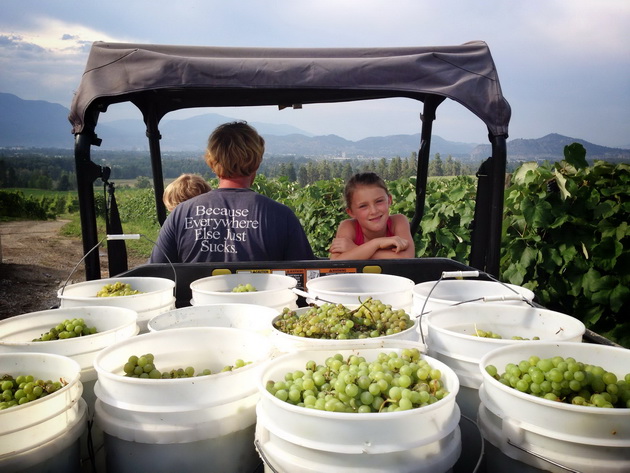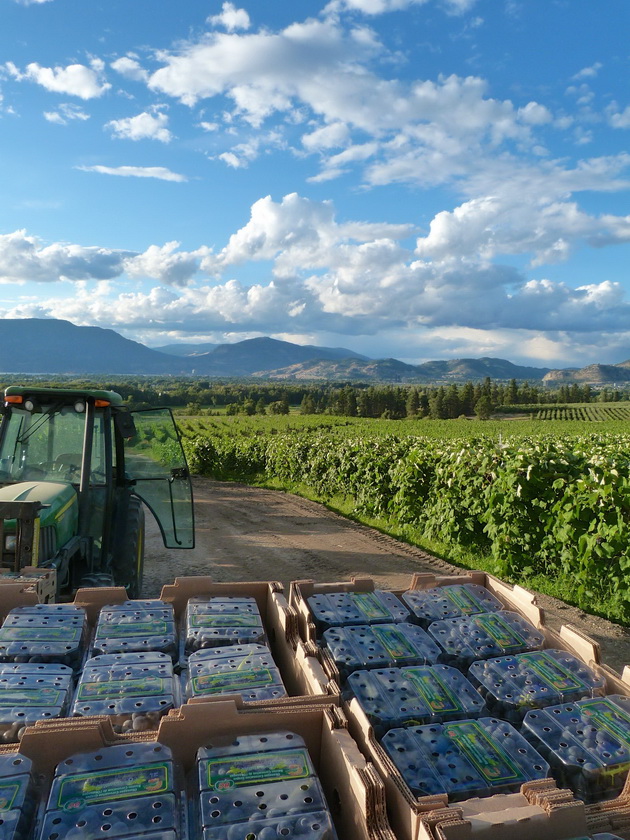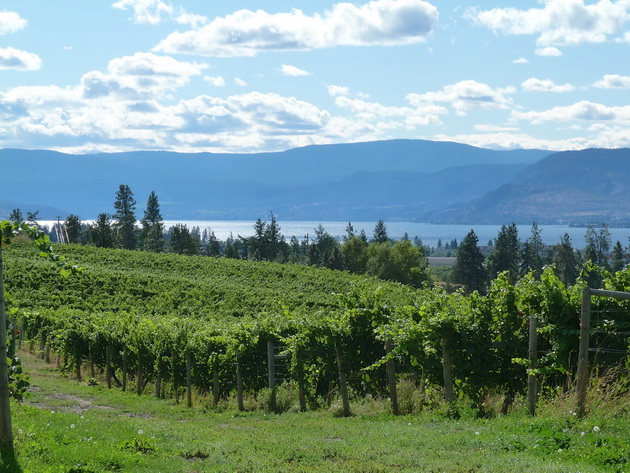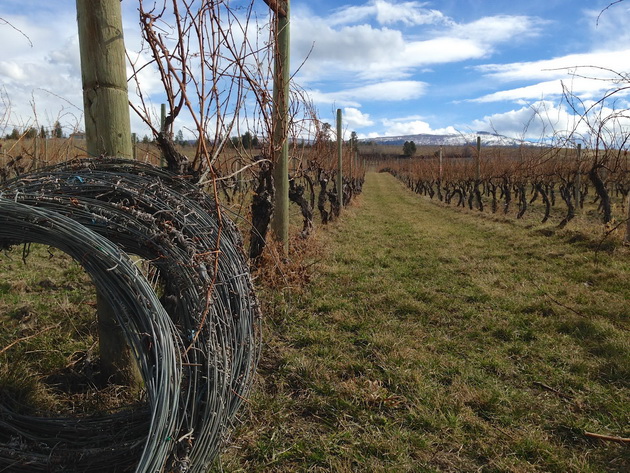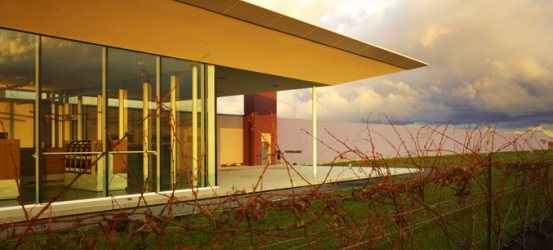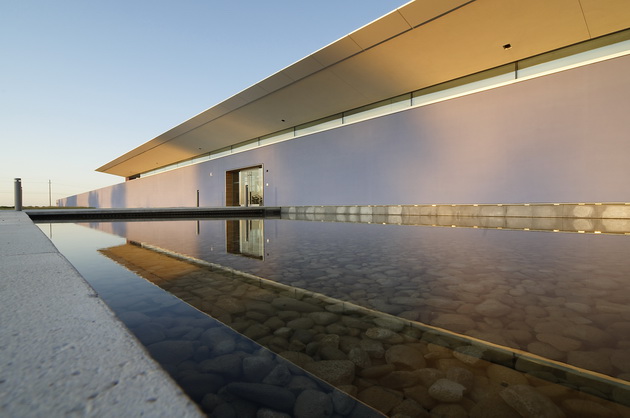What a terrific chat with Ann Sperling, Winemaker at Southbrook Vineyards!
Click on the arrow above to watch the video.
Listen to Ann’s stories about making Canada’s first orange wine.
Is orange wine the new white wine?
Why are orange and natural wines so trendy?
What makes them different from other wines?
Cheers,
Natalie
Watch previous episodes of the Sunday Sipper Club (SSC) and find out who’s coming up next.
Click on the video above to hear Ann’s explanation of Orange wines.
Here’s a sampling of our lively discussion from our tasting…
Is Orange the New White?
- Let’s clear this up first: orange wine is not made from oranges, it refers only to the wine’s colour ;)
- It’s also known as amber wine and skin-fermented white wine
- Although orange wine seems new and trendy, it’s actually an ancient style of wine that’s been used for thousands of years to make white wines, often fermented without temperature control for long periods in qvevri (clay vessels or amphorae), in regions such as Georgia and Armenia.
- Modern white winemaking with temperature-controlled fermentation in stainless steel tanks has only been practised for the past 40-50 years.
- The re-emergence of orange wines started in the early 1990s with Italian winemaker Josko Gravner in the northern cool region of Friuli. He was trying to get away from over-manipulated wines and get back to ancient methods.
- Today, orange wines are produced in Europe, North America, Australia, Chile, South Africa, New Zealand.
- However, Ontario is the first wine region to legislate how orange wine is made – Vintner’s Quality Alliance (VQA) provincial law went into effect July 1, 2017
- Niagara’s Southbrook Vineyards was the first to request this category from the VQA in March 2016, as the winery was already making an orange wine from skin-fermented vidal grapes from vines planted in their Four Mile Creek Vineyard. However, since it didn’t fit VQA categories, it had to be labelled Product of Canada.
- Creating the new category allowed Southbrook and others to be specific about their vineyard and geography, often the sign of a good wine. It also put these wines into a more favourable tax category, with about 35% more revenue that rewards artisanal and local products.
- Orange wines are white wines made like red wines: confused yet?
- They start out like making white wine, but then they leave the grape skins on during fermentation just as red wines do and white wines do not.
- This imparts distinctive colour, flavour and texture whereas the skins are removed to ferment white wine
- orange wine is also exposed to more oxygen which adds a savoury character called umami, the fifth taste along with sweet, salty, sour and bitter
- The VQA law specifies that the wine is a table wine (still or effervescent) made from fresh white or pink vinifera and permitted hybrid grapes.
- All of the grapes are macerated and fermented on their skins for at least ten days to achieve the character of orange wine.
- The words “Skin Fermented White” must be on the label and optionally “Orange” or “Amber” can also be printed. appear alongside), but the essence is that the wine must ferment on the skins.
- Vintners must also declare their intent to make a skin-fermented white at the time of harvest, just as they must do with icewine, so they don’t claim the label after the fact because a wine doesn’t get approval for another category.
- The skins of grapes contain aromatic precursors, the compounds that eventually get released into the wine to create its distinctive aromas and flavours, as well as polyphenols that shield wine from oxydation and thereby allow it to age longer. As a solvent, alcohol helps to extract these compounds from the skins.
- some criticize orange wine as masking local soil and climate (terroir) as well as grape character
- the reverse argument is that orange wine is truer to terroir because it uses all of the grape: flesh, juice and skin
- like natural, organic and biodynamic wines, orange wines usually don’t have any additives and aren’t filtered or fined
- However, not all natural, organic and biodynamic wines are orange
- And not all orange wines are also natural, organic or biodynamic wines
- Who else makes orange wines in Ontario? Pearl Morissette (Cuvée Blu) and Norm Hardie (Pinot Gris Ponton)
- You won’t find an orange wine category on most restaurant lists: they’re usually lumped into the white wine category, and sometimes rose, except of course, on the hippest lists in San Francisco, New York, Paris, Tokyo and Florence.
Biodynamic and Organic Winemaking: Ann Sperling
You can watch our previous video interview with Ann on biodynamic and organic winemaking here.
Want to get one of Ann’s wines? You have a wide choice: Ann now works at Ontario’s Southbrook Vineyards, along with her own family winery in British Columbia, Sperling Vineyards, Versado in Argentina, and a collaboration with her husband Peter Gamble in Nova Scotia for Benjamin Bridge.
You’ll also find the specific wines we tasted further down this post.
Ann Sperling
Ann Sperling was raised on a vineyard, where her family has grown grapes since the 1850s; her great-grandparents planted grapes in British Columbia’s Okanagan Valley. “I had a miniature version of every conceivable farm tool—a child-sized hoe and so on—so that I could help with almost every part of growing the vines,” she says.
She remembers yearning to be older so that she could do even more of the farming. At dinner, the family ate and drank 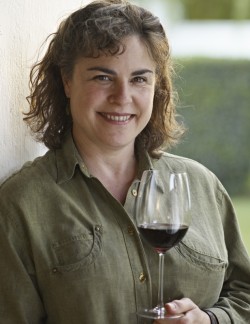 what they grew, and analyzed it for freshness, ripeness and balance, which helped her to develop her tasting ability. Having grown up among the vines, she says she has an intuitive feel for them: she can walk into any vineyard around the world, and within seconds assess its age and vitality.
what they grew, and analyzed it for freshness, ripeness and balance, which helped her to develop her tasting ability. Having grown up among the vines, she says she has an intuitive feel for them: she can walk into any vineyard around the world, and within seconds assess its age and vitality.
Sperling says that many customers send her messages saying how much they enjoyed her wine or that they drank it at their wedding. “A song writer sent me his CD and said that he got inspired over several glasses of my wine,” she says. “I can’t imagine that lawyers get the same positive reinforcement.”
So are women better winemakers? Not necessarily, though some research suggests that they are better wine tasters—or rather wine smellers, since most of the complexity of wine is in its smell rather than its taste. Humans can detect just five basic tastes in our mouths, but more than two thousand aromas with our noses.
Some theories explain women’s acute sense of smell as an evolutionary development: women were once the gathers of berries and plants, both for cooking and medicinal purposes, and were responsible for preventing their children from eating anything poisonous. They were also traditionally the cooks, mixing different ingredients, and smelling and tasting to judge the result. Some theories suggest that women simply have more taste buds per square millimetre on their tongues.
Southbrook Vineyards Orange Wine 2016
Southbrook has always sourced grapes from Niagara-on-the-Lake, so Bill is excited about operating his own vineyard there. Brought on as a winemaking consultant in 2005, Ann Sperling introduces Bill and Marilyn to an excellent opportunity. A 74-acre parcel in the warm Four Mile Creek sub-appellation of Niagara-on-the-Lake is on the market, complete with 36 acres of ideally planted, well-selected varieties and top-notch clones. The couple realizes its potential, and decides on the new location to build the winery of their dreams. They convince Ann Sperling to sign on as full-time Director of Winemaking and Viticulture.
Expansion of the vineyard is planned and planting starts. The design of a winery with associated facilities and a hospitality building are entrusted to Jack Diamond of Diamond and Schmitt Architects of Toronto. The Redelmeiers commence creation of a fully biodynamic, organic and environmentally responsible winemaking operation.
Ann is ready to make wine in Niagara-on-the-Lake by 2006 and the architects’ attentions turn to the construction of the hospitality pavilion. The wine shop move is undertaken in the fall of 2007, while the family’s Richmond Hill presence lives on in the form of the Pumpkin Patch and Country Store until it was decided to close it in early 2013. An adjoining 75-acre parcel is purchased to provide an area for pasture and for future vineyard expansion. The new enterprise is re-named Southbrook Vineyards to reflect the Redelmeier’s new role as vineyard stewards. The opening celebration of the Hospitality Pavilion takes place on the Summer Solstice of 2008.
 Ann Sperling, Director of Winemaking and Viticulture
Ann Sperling, Director of Winemaking and Viticulture
Considered a leading force in the Canadian movement towards organic and biodynamic fine winemaking, Ann has over two decades of experience in winegrowing, winemaking and consulting for successful winery startups.
Ann prefers to think of herself as a “Winegrower,” instead of a winemaker. This vineyard-centric ideology is passionately applied to every facet of Southbrook’s winemaking philosophy, including its organic and biodynamic grape-growing practices, and gentle handling in the winery.
Ann’s roots are deeply embedded in the terroir of winegrowing. Raised on a family vineyard in Kelowna, BC, Ann began early on recognizing, developing and appreciating the fine balance within the characteristics of the fruit and its effects on wine. She completed her Food Sciences degree at UBC and has continued her path of learning and exploration since she entered the wine industry full-time in 1984.
Ann’s talents were recognized in the early nineties when her 1992 Merlot won medals in every competition it was entered in, taking the Gold medal at the International Wine and Spirits Competition in the UK and Platinum at the Okanagan Wine Festival. Ann’s particular pride in this success is that Merlot has since become a more widely planted grape variety in the Okanagan Valley.
Ann has played pivotal roles in the start-ups of both B.C.’s CedarCreek winery and Niagara’s Malivoire Wine Company—where Pinot fans will remember she oversaw the conversion of the Moira Vineyard to organic.
In 2004, Ann was awarded with Winemaker of the Year at the Ontario Wine Awards.
Add to all this her various consulting projects and her own ancient Malbec vineyard in Mendoza and you’ll start to get an understanding how Ann loves to spend her time—immersed in the creation of fine wines!
Full Transcript:
Natalie: Orange wines.
Natalie: Why is everyone talking about orange wines these days? Is this just another fad or trend or something real happening here? It is orange, the new red or rose cant be the new black. But tonight on the Sunday Sipper Club, we’re gonna find out so you’re in the right place. If you’re curious about orange wines or want to know more about them, where you can get them and why you should try them. , but before I dive into our topic and introduce our special guest tonight in the comments below, let me know. Have you ever tried an orange wine? Just yes or no. Have you tried orange wine? I’d love to know if, if you’re familiar with the wines, if you’ve tried them, you’re just curious and have joined us here tonight because tonight we are going to have one of Canada’s leading winemakers. She’s been a force in the Canadian winemaking industry for biodynamic and organic wines. Now she’s leading the charge on these orange wines and I’m so pleased that Anne Sperling of Southbrook vineyards can join us here tonight. Welcome, Anne. Hi Natalie. It’s great to be here. I’m terrific. Now first things first and we should clarify, were any oranges harmed in the making of this one? Absolutely not. And by the way, I don’t use roses in my Rose either. Oh, excellent.
Natalie: And a guy named Frank doesn’t make captain, we could go on forever. Okay. Okay. , first things first, can you give us a high-level definition of what orange wine is pleasing?
Ann: So this in the simplest definition, orange wine is a skin-fermented white wine. And, and especially now that we have new, a new category in, Ontario, that’s the main thing that we have to adhere to is that fermentation actually takes place on the skins of white grapes.
Natalie: Okay, great. And so, I almost think it’s like a white wine that’s made like a red, which probably just confuses the heck out of everyone. But, tell me a few things about this. there are some new, laws around this in Ontario, but actually let’s back up. You are the first one to sort of approach, the VQ vendors called the Alliance about forming this group. So tell us about that. When did you do it? Why did you do it? Why did you want to create an orange wine category?
Ann: Well, orange wine is something that’s been for, for, you know, probably thousands of years, so it’s probably how most wines were made. White or red, before stainless steel and, and you know, presses and, and kind of modern winemaking since, you know, probably those since the second world war. And, so, so it’s kinda, it’s going back to those roots and looking at, you know, what is it that, made white wines, what they were, you know, way back when, but also, but also thinking about the revival that’s taken place in places like Georgia and Northern Northeast of Italy where, these wines are being made again and, with white winemaking were very early, you know, we’re pressing off the juice and we’re leaving 35% of the great behind. And so for me, I’m looking at, you know, I’m looking at, this, the modern method and thinking, well, you know, there also, there’s also, you know, pressure on us to, as winemakers to consider additives and Oak and tenon and you know, these kinds of additions to, to even white wines and it, and, and when you look at what we’re leaving behind or what, when, when we press what we put into the compost pile, a lot of those, elements are there.
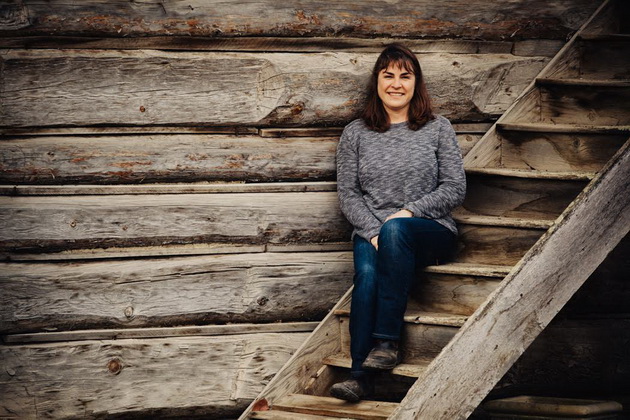
Ann: So I really wanted to explore that
Natalie: drill. The natural elements, the sort of stuffing I like, I see things floating in this that are, they’re actually a good thing
Ann: or sinking as the case may be. , yeah, the, in this case, this orange wine was from, bottles with its Lees and, it’s a wine that has been made, not only from biodynamic grapes with wild yeast fermentation and wild now alactic but with also with no additives of any kind, no sulfites. And, and that little bit of yeast in the bottom there is actually helping to keep the line fresh.
Natalie: Excellent. So because it has no sulfites the what we traditionally, or sorry, sulfites added what we traditionally associate as a preservative. How long will this wine last without it?
Ann: Well, it’s amazing. , there’s a lot of life in these wines. They have the tannin from the stems as well as the skins. And, and the first vintage was 2014 that I made and it’s still as fresh as 2016. It’s amazing when you open the bottles
Natalie: naturally has the natural stuffing to preserve it. Exactly. Yeah. So I had to sort of take a crash course. I have to be honest, like to get up to speed on this and to even ask you halfway intelligent questions. But I’m intrigued. So you talked about, it’s actually an ancient tradition. You mentioned Georgia. , heard that Armenia used to do this as the traditional white wine method, of making white wines for 8,000 years. So, and then we’ve sort of moved away from that maybe 40 or 50 years ago with white winemaking, went to stainless steel, took out all of the, you know, the grape skins and everything else. , so why the revival now?
Ann: I think it’s, it, it goes along with, some of the standardization of wine or the criticism that, you know, wines are becoming uniform no matter where they come from. And, and so, you know, at Southbrook, because we put so much effort into our vineyards and art and expressing our terroir, I wanted to, you know, dig deeper in that regard. So, this wine, that we’re, exploring tonight is made from the Videla great. And that’s, that’s one that everyone knows from ice wine. And those amazing skins are, are important for allowing the grapes to hang late into the season until everything freezes, for ice winemaking. But in fact, there’s a lot of flavors that are locked up in those skins. That’s that when you make ’em just irregular white wine, you, you don’t really get into that.
Ann: And that’s really, you know, I thought, you know, this here, we call that a true variety where there’s a, sorry So there’s, yeah, there are turbines that are, those are precursors to aroma compounds that are locked in the skins. And if you don’t soak the skins, or in this case ferments the skins, you don’t really get the full potential of the great. So I really wanted to dig into that and, and get more from, you know, from this common grape that, you know, it’s kind of our native variety or, and, and, I, I wanted to understand it better.
Natalie: Yeah. It’s a tough little grape, as you say, a conservative winter to make ice wine. And so it has also been viewed as a workhorse, kind of great because it’s so tough, but you’re right, it would contain a lot of, these, as you call it precursors. Does that mean, the aroma in the potential that will eventually be released into the wine?
Ann: Exactly. Except if you, if all you do is press it off and, and work with the juice, you don’t really get close to the skin. You don’t really, have access to those compounds. And so by fermenting on the skins, those, all of those are being released into the wine. So, so as I’m sure you’re tasting there, there’s all of this, their savory ness that comes through, you know, there’s a lot of verbal, parts to the aroma. There’s citrusy, kind of bare Gamal like Earl Grey tea. And, and there’s really not a lot of fruitiness, but, which, which we, so, you know, we to associate with white wines. So I like to kind of warn people or tell people, you know, throw your fruity descriptors out the window and dig into your, your spices and herbs and your tea box, you know, your jasmines and your florals and, and things like that.
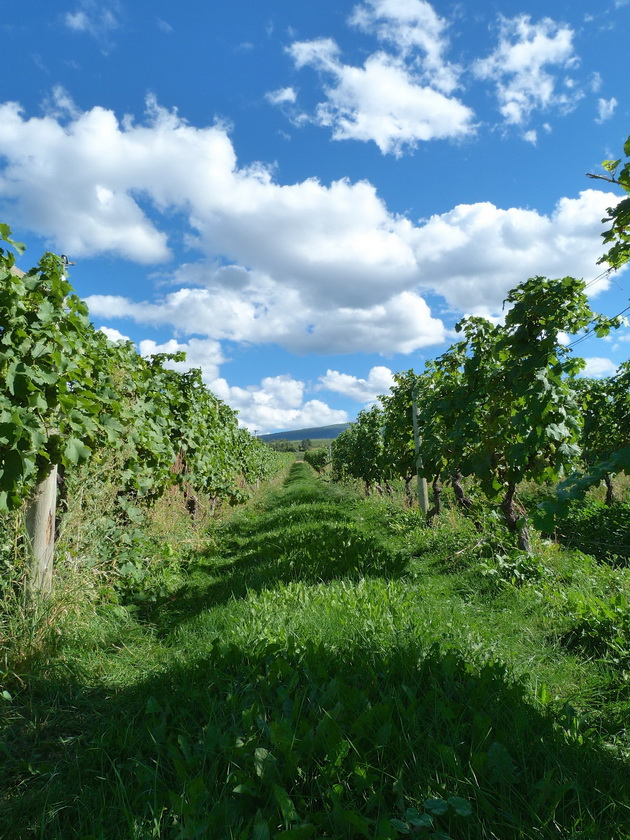
Natalie: Fascinating. And it’s, how does it get that savory character? What, what is creating that? , it’s the skin contact obviously, but how, how is that getting into this?
Ann: Well, I think it’s, there’s, it’s completely fermented. So there’s, you know, fermentation by yeast. There’s fermentation by malolactic bacteria. There’s probably a little bit of Bret in there as well. And all of those who don’t know Brettanomyces is what, or Bret? Brit? Yeah. Brettanomyces is an, it’s another yeast. , it’s, it tends to be associated with kind of some earthy barn Yardy kind of notes that, you know, it’s kind of famous and burgundy and, and, and other reds Rhones and things like that. The fault though. Yeah, it depends on it. It can be if it overtakes the wine, but if it’s there as a subtle, so, Brettanomyces yeast is actually, they’re acting on, sugars, that s, Brettanomyces acting on sugars that Saccharomyces can’t access. So they ferment a little bit, they make the wine a little bit more dry and, but they also have, the compounds that are adding to the earthiness and often sort of richness to the wine.
Ann: So it’s there. Wow. Yeah. You get all of that depth. And I think that’s where all of the savoriness is coming. And of course, in this case, I’m using stems also. I’m fermenting on the skins, but also the stems. So I have two tannic, no, I, well, I mean it’s, it’s much more tannic than if they weren’t in there. , but, but I think that’s contributing to the herbal and savoriness of the wine. So it’s a, there’s a lot of, tannins and, catechins that are there and the seeds and stems that give, this wine real, texture in the mid-palate. So the skins are an Oak. We associate more with the finish in a wine. There’s no Oak in this. So the tannin hit is kind of on the attack and then it finishes very fresh with the, with the dryness and the acidity.
Natalie: It does. And yet there’s so much texture, there’s so much body to this without it being heavy, it’s, it’s a pretty incredible wine. , and we just, practically speaking we can only get this from the winery. Is that right? Or
Ann: this at this point? , yes, it’s, it’s available at the winery. , we ship, of course, so we can ship to, you know, anywhere in Ontario, no problem. And we ship to many places in Canada. , and of course, we have restaurants are, that have been, been able to access this wine for like a year and a half now. So, now that it has been QA, we just can kind of proclaim it a little further and a little wider, so.
Natalie: Right. And are you noticing any, restaurant wine lists now, adopting an orange wine category or at least some more orange wines? Are they kind of lumped in with white wines? What are you seeing in restaurants?
Ann: Yeah, I think we’re seeing it, standing apart. , and I think it’s the restaurants that, include orange wines on their lists often are very connected with the food community, the local food producers. And, and you know, it’s just, it’s a really interesting, flavor profile, you know, that safe freeness that we don’t always delve into. So, so the restaurants that are supportive are also, you know, very connected to what they’re doing.

Natalie: Absolutely. I would think that savoriness would lend itself to even a steak or anything sort of caramelized or with that savory character.
Ann: So, yeah, working with meats, it kind of enhances that. Meatiness. But, but like in the spring we were serving it with, asparagus and poached egg on, you know, on a noodle kind of, the basin was really lovely. And, but you can put it with barbecue, you know, the sauces, the pulled pork, you know, those kinds of things too because it kind of cuts through some of the greasiness, some of the sweetness in the sauces and really freshens your palette again.
Natalie: That’s amazing. I, I actually want to go and just try it right now, but really you’re making me hungry, which is good. But when I think of eggs and asparagus, especially two of the biggest, toughest foods we associate in terms of wine pairing,, they have these natural compounds themselves that really tend to smother killer clash against wine. So it’d be really interesting to try an orange wine with those.
Ann: Yeah. And of course, anything, any other fermented foods. So salamis cheeses, you know, a wide range of, of those kinds of things also are just automatic, natural pairings for orange wines.
Natalie: Awesome. one of the things I was reading about orange wines is that some people question if, if it’s if they mask the terroir or the typicity of the grape, that sort of thing that, that, that seems to be, one of the counter-arguments that I come across when it comes to orange wines. , how do you respond to that?
Ann: Well, in, in, I think that once we learn and understand these wines, as well as we, know our reds and our whites from the region will, S will start to recognize specific traits. But, I know when, when I was looking at what we grow at Southbrook in the way of white varieties and which ones might lend themselves to this process because of course after the fermentation, after the malolactic and because I, I wanted to set a really high bar for myself and making it a natural line. I’m not able to adjust the acidity or bring the pH down into a lower range or things like that. So I wanted something that, you know, based on our vineyard, not just the varietals, but that would be, you know, results in a balanced wine after all of that. And, and I think that you know, terroir is, is coming through in that way, in the kind of the natural harmony of the wine and, and so, so it’s just gonna take us some time to be able to recognize it.
Natalie: Sure. And you’re using more of the grape. I mean, you’re not throwing away the skin, so yeah,
Ann: yeah, yeah. Exactly.
Natalie: Even more representative as opposed to less. , and so, take me back, it was March 2016 you approached the BQA, which is the regulatory body for wines here in Ontario. , at the time you are making an orange wine, but you could not label it anything other than the product of Canada and could not put VQI on it. Our symbol of, quality and standards. , so what did you propose to them and, and why did you want to get it out of that sort of generic labeling?
Ann: Well, I think, the Viki I, I’ve been kind of part of the BQA since the, since even before it existed. So the very first meeting that we had, I was in British Columbia at the time that, that introduced the concept, to the winemakers I was part of. And so, you know, I was, I’ve been part of the standards committee and, and things like that over the years. And, so, you know, I, I believe in the system and I wanted to, not only be able to make the wine and you know, and, and, introduce it to consumers at all levels. But I thought that you know, there was no reason not to have this in our standards. And it’s, it’s unusual to have, like if you look at other Appalachian systems, they often accommodate orange wines in the white wine category, but, but we still maintain a tasting panel for the BQA.

Ann: And because the wine was atypical in color in often cloudiness, the savory Enos, all of them, we have a requirement for a bridal character in our white wines. , and so all many of those things were making it difficult for the tasting panel to approve the wines. So, so we, we chose to, create a new category and, and so it was a, you know, a bit of a, a steep learning curve for many of the parts, of the BQA system. But, but, I think it, it demonstrates that you know, that, that it is an evolving thing. And, and so we were able to put some, put some standards around it and, and now, you know, we can, we’re, we’re among the very few Appalachian systems in the world that recognizes orange wines separately.
Natalie: That’s awesome. And you were the first to establish that, Paul has a question with the residual sugars and yeast. Do you experience a second fermentation over time?
Ann: so, this is completely dry in every respect. So there isn’t, there isn’t any residual sugar. , and, so this wine goes to bottle with, with, you know, virtually no potential for reefer mentation.
Natalie: Oh, okay. As there would be with champagne where they have the dosage, the sweetness that will referment inside the bottle trap, the bubbles and so on. So this is dry, to begin with. Good question, Paul. , okay. So where do you think, this category is heading for orange wines? What do you think is the next step for orange wines? Other than, of course, wider acceptance, that sort of thing, but what, what would you like to see happen?
Ann: Well, I, I think that there’s, there’s a lot of regionalities happening. I’ll use the I’ll, I’ll kind of use that word, with orange wine. So, so, producers are digging into their heritage varieties and, you know, I’m thinking internationally, but they’re, but they’re taking this, these small batches and they’re, you know, selling them at their local restaurants. And it’s a, it’s a really great way for, you know, consumers to engage with the local, agricultural community. And so, and I, and I think that’s really what I’d like to see happen with orange wines is, you know, lots of small batches and lots of like engagement, at a really, you know, a really, foodie level, like right there, you know, with your plate of whatever, you know, your local fresh vegetables and, and, you know, locally raised meats and things like that. And, to really kind of start thinking about winemakers as, as farmers and as you know, people that are making their meals more interesting.
Natalie: Absolutely. And you refer to yourself as a winegrower.
Ann: Yeah, yeah, exactly. Yeah. But it, but it’s really, you know, it’s the engagement with, I think that, that we have some barriers to that with, you know, a big organization like the LCBO, distributing our wines and making, you know, making it more distant, from the consumers. And sure it’s more convenient for everyone. But at the same time I think we want to, you know, engage and, and realize, you know, that our, our wine and our food are coming from our local, our local agriculture.
Natalie: Absolutely. So let’s also clear up, another sort of understanding of these different categories that are emerging. Another hot, trendy term or category these days is a natural wine. So how does, an orange wine differ from a natural, is this a natural wine for starters? And how is it, how would it be different from natural lines?
Ann: So, natural wines. , so within something like the BQA, we don’t have a category for natural wines, but, but there is, kind of, an unwritten and then, and there’s, there are some groups trying to put some definition around it about what natural wine is. And, and again, it’s like a counter movement to, the industrialization of, of wine. And, so, so the basic concept of natural wine is that its grapes from the vineyard, fermented and bottled. So it’s not, you know, it’s not, having additives and you know, especially compounds that are foreign to grapes. So, you know, Oak is one of them. But, but there’s, you know, other things that, that are added like Acacia gums and, you know, things like that that you just mentioned. Yeah. Like gum Moravec. So it’s coming from a tree, you know, tropical tree and it adds body to a line.
Ann: And it’s like, you know, wine doesn’t, wine doesn’t need that. , but it gets, you know, those kinds of additives get used. So, so this, so natural wines, the concept is to, ferment with wild yeast. , often there’s no, or low sulfites added and, other additives are either non-existent or kept to an absolute miniumm. , in the case of this, orange wine from Southbrook, it is, as far as I’m concerned, as the highest standard for natural wine. So, biodynamic, grapes fermented with, hand picked and foot trodden grapes and, yeah, yeah, yeah. Team of people who do that. Well, it’s not a big batch, right? I mean it’s a, you know, it’s relatively small, but, hand-harvested grapes. We sorted them. , and as they came off the sorting table, we collected them in about 250 kilo lots.
Ann: And then they were flip tread briefly to break up maybe about a third of the berries and that just kind of gets the liquid in contact with skins. And, and then the fermentation started from there. , because there’s this amazing matrix of, whole clusters and stems. The fermentation is very gentle. It’s, some of the heat is diffused by the stems because they’re not sweet and it doesn’t really form, a cap, like red wine, like that cap that gets pushed up the top and then they write down sometimes. Yeah. Right. And so we don’t really have to punch down. We just kind of manage the surface and, in, in it’s fermented in small lots. So we keep it closed and it’s more like an infusion. So it’s a very gentle interaction between the fermentation and, and all of the components fermentation, more nos, not necessarily.
Ann: this was, in, in each vintage that I’ve made it, usually by two to three weeks of skin contact, the fermentation is finished. I like to let the malolactic, complete. And, so I’m usually pressing it after about a month, 26 to 32 days, somewhere in that range. , and then, the wine basically is, in, in a tank to settle. And we rock it a couple of times just as the, as the East and the cloudiness settles and then we go to bottle. So it’s a pretty, very straight forward, but also, there’s a really lovely balance that is, you know, that just comes out of it. And I think, yeah.
Natalie: but have you made an orange wine with any other grape or do you intend to?
Ann: Actually, I’ve been making an orange wine at Sperling vineyards in my, families, property in Kelowna BC. And there, they’re, I used Pinot GRI. , we, we have a small amount of Del there and, so I did a little trial with Fidel, this past year, but I like, I like both varieties, I think, the Fidel and other aromatic varieties. So if you look, around, there are a few new introductions. So Vineland estates did an orange wine from in 2016 from Chardonnay, which is, an aromatic, a Chardonnay variety and, and others have done, with reisling. , and, so there’s, you know, you can use a range of varieties in BC they’ve brought, at haywire, they’ve used Pinot GRI and sauvignon blonde, not together, but separate. And we also have Pearl Morissette. , they’ve worked with Chardonnay and Riesling together
Ann: So you really, yeah, you really get a lot of, interesting aromas in textures, you know, depending on the variety. So it’s, it’s not restricted. , if you look internationally, as I was mentioning, there’s a lot of producers that have kind of, they’ve dug into their, traditional or regional varieties and kind of are bringing those back into, interest, you know, in, into the conversation to revive some of those varieties because often they have higher acidity and, and with, you know, climate change and things like that, they’re often, you know, just more suited to, to where they’re growing. , and if you’re making wine without additives, then you need, you need all that, you need the acidity, you need the texture.
Natalie: So we’ve sort of differentiated between natural wines and orange wines. Is there, what would be the key differences between an orange wine and an organic or all orange wines? Organic and or biodynamic
Ann: they don’t have to be. , and, so it’s, especially like within the BQA rules, we, we wanted to create a framework around, the methodology and, you know, the resulting textures and flavors. So, so we didn’t restrict it to organic production, but, but you know, we’re seeing, you know, kind of more of that, especially with producers that want to make the wines natural. Okay. , sorry, I’ve gotta
Natalie: it’s, I think it’s that same client as what did the teaser video, you have trained us, , higher breed of fruit flies because they’re natural. They survive anything. That’s great. Oh, they only drink orange wines though. Alright. So we have talked about orange natural wines. Of course, you have a premium line of, organic biodynamic wines with Southbrook. , let’s talk about, let’s shift gears. Although we’ll still take questions on natural and orange wines on the this line you call seriously cool. Maybe give us some background on what these wines are, why they got named this way and how they’re different from the orange wines. Okay.
Ann: so, seriously cool. We have a red blend, a really approachable red blend. We have a Chardonnay and a, and a Rose, which is a blend. And, what we were, what we wanted to do is create a place for, organic growers that were in, whose vineyards were in transition. , so that means that, during the three year period that, their vineyards would be farmed organically but not yet certified. , there, we need a place for those grapes because we want to support those growers through that, that time. But those, and so that’s where that’s really the origin of this. So we felt that you know, we could make them broadly available through the LCBO. We could make them, you know, delicious and approachable wines and, and that they would, you know, help us to, work with growers who are soon to be organic.
Natalie: So it’s literally like a farm team. So that’s, yeah.
Ann :Yeah, no, that’s a really great analogy.
Natalie: I love the fun sort of labeling, but lots of colors. Of course, the cool is associated with the cool climate and the cool method of, of, of why making maybe talk a little bit about that.
Ann: Yeah, so I’m seriously cool. I mean, the labels, you’ll, you’ve got three bottles of three different ones, but in fact, each label series has three, designs. So when you see it on the shelf, you’re going to see like, so for example, here’s, here’s the, the red one of the reds that I have. And, the rosé, there’s one of the Rosie labels, so you can see they’re really fun and colorful and, and our, our label designer, has, a personal project that is meant just to bring joy. , and, and so she worked with the colors and the combinations and her, her website, for fun and, you know, just making life a little more joyous. And, and that’s, that’s where these labels came from. And then the seriously cool. , it’s something that, Gil Rydell, Meyer, the owner of Southbrook had been involved in and, to kind of introduce Canadian wines internationally and to kind of really emphasize that we have a cool climate, but we’re, and you know, we’ve been making wine for, for an, you know, a number of generations now.
Ann: And, that, you know, we’re really behind our climates in the sense that we embrace the characteristics, the freshness, the floral, the fruity, that comes from our cold climate.
Natalie:Absolutely.
Ann :well, one of the things that we felt was important at the BQA level was to, use the term skin fermented white. And so the label, that, I think the label that you have and the label that I still have, it’s our old label, so you can see it says, orange wine and, there’s no, vineyard reference. It says our farms, so it’s a non-BQA label. , but in the BQA version it says, the orange wine part is actually very small. It says skin-fermented white. So it gives consumers a clue that it’s, it’s great, they might already know, but a methodology that they might not have tried before.
Natalie: Okay, great. And you may also put, is it optional to put Amber wine as well on the label?
Ann: yup. Amber, Amber, orange, can be used, as synonyms. But, the skin fermented white has to be there.
Natalie: Okay. Skin-fermented white. Okay.
Ann: Well, I’m gonna let you in on a, on a secret that, that sommeliers don’t really want to reveal and that orange wines for the lazy somms. Right? And what that means is that you can, you can pair orange wine with almost anything. So I would say, you know, if you’re, if you’re the type that’s experimenting with orange wine, then just try it, you know, try it with the things you love because, because it, it really does connect with, with so many different foods. So, and I was like I was saying earlier, you know, anything that’s fermented, so, you know, including the traditional fermented foods and vegetables like kimchi and sauerkraut along with, you know, cheeses, all kinds of, of preserved meats and, but then you know, whatever is kind of, you know, rich and tasty that you’re bringing, taking off the barbecue, grilled veggies, you know, anything like that. It really, there’s, there’s, there’s just something there that savoriness that in mommy that connects, with, with cooked foods.
Natalie: And is it that, the fermentation process in these other foods like cheese is, is it that element that produces the ami, the savory Venus that sort of talks to the savoriness in the wine? Is that what
Ann :Oh, yeah, yeah, I would say yep, that’s exactly it.
Natalie: Okay. Yeah. Okay. Very good. , all right. So your, seriously cool. Let’s break that one open. I don’t know if you have it there, but I’m going to give that one a try. And, maybe you could describe this one a little bit. You’ve sort of talked about it cool and fresh and now we’re into fruity, not, not Earl Grey tea or anything.
Ann: So this a seriously cool Chardonnay. It’s from the 2016 vintage and, a big, a portion of the blend comes from, an excellent, organic grower. She has a vineyard that’s on the Lakeshore in Lincoln, so it’s, it has really close proximity to like Ontario, so it’s a cool site. She grows Chardonnay, there. So, it’s a, it’s an aromatic version of Chardonnay and, yeah, and really gives like a fresh and floral kind of note to the wine. It’s made without Oak. , and, and it’s quite soft on the pallet. So, it’s, it’s Drudge just slightly, off-dry. There are about four grams of residual sugar there, but because the acidity is quite soft, it’s very approachable.
Natalie:Yeah. Tastes dry and very floral, not almost as floral as a recently, but not quite. It’s, it’s quite expressive for Sharday, which I associate more with the lousy, buttery, whatever when it’s soaked. But it’s interesting that you note the, the vineyard grower in your description reminds me of great restaurants and on their restaurant list, they’ll note their local producers who provide the mushrooms and who, you know, where are they getting all of these ingredients. So this is lovely. And the price point of these seriously cool wines is around there. 14.95. Oh, that’s good. That’s good. I think mailable across Canada or just in Ontario right now? They’re just Ontario. Okay. But you would ship them, would you? Yeah, we can ship from the winery for sure.
Ann: Yeah. And, the LCBO carries them generally, in Ontario.
Ann: Okay, terrific. , well actually, during the, I foresee there was one of the producers from Sonoma, a producer called scribe and they’re making, an orange Chardonnay. And in fact, they start, they, they, the variety that kind of got them started on the skin. The fermented part was actually a shard name of scape and they felt that the wine was maybe lacking a bit of structure and so they went deeper and deeper into the skins, into the stems. And then, you know, it sort of became a thing, for them. So they use, regular clones of Chardonnay and the Chardonnay musky now. But, but that was really, a fun one to try
Natalie: And I foresee just for those who don’t know is the international cool climate Chardonnay, cool climate festival. I probably got the words of John’s celebration. Yeah, that happened to Niagara every year in late July. And everybody there, there are a lot of winemakers from cool climate regions making a cool climate Chardonnay and that style that come and everybody shares the wines and there are events and tastings and everything else. So that’s pretty cool. That’s pretty cool. Anyway, there we go. , let’s, let’s take a look at this one. This is a red wine blend. Your red. Okay.
Ann: So this is, predominantly, Pinot noir. , but it’s blended with, some Gamay, a little bit of syrah and, a little bit of So, all, all varieties that add, you know, freshness to a red wine. , again, this was only aged in older barrels, so there’s not really an oaky component to it. It’s 2013, so it’s got, a little bit of, complexity from, age. It was bottled, more recently, so the aging took place in the cellar. But, but I think it’s, you know, a really nice, versatile red.
Natalie: Absolutely. It just leaps out of the glass that’s, that’s pretty, great. Especially at this price point. It’s just so like, poof. Wants to get out of the glass. That’s great. , and what would you pair with this? , perhaps,
Ann: well, I like to think about these as, you know, wines that are versatile, but for me, pinot Gammy, you know, this kind of blend, it’s, it’s definitely something for, grilling and barbecue season. So, you know, I love it with burgers, but, but you can do your, you know, your veggies, your grilled veggies and you know, that kind of thing too. So, right now I’ve got a lot of zucchinis in my, coming out of my garden, so, so grilling, you know, getting the nicest little, some black lines on them and, bringing out that grilled taste, I think it’s a really nice way to, offset the, the fruitiness of this wine.
Natalie:Absolutely. Ah, again, I just really want to just wrap this up. I’m so hungry. You’re going to get to do that. Okay. And then you have the rosé, right? Yeah. I don’t think I have it with me, but maybe you can show us, Rose. Can you see it?
Ann: Yeah, it’s a wine to watch. And, this rose is a blend of Pinot noir actually, coming again from Heather laundry. She’s a very dedicated organic grower and, she’s converting another block of, of vines to organic for us. So, so it was a nice way to kind of bring, bring a little bit of, acidity and tightness to the blend and, along with those nice cherry peanut notes.
Natalie: Absolutely. And it’s the same price point as well, right? Yeah. 14.95. Yeah, it could really afford. , absolutely. , so, Ann is there anything that, we haven’t covered that you’d like to talk about? , whether it co, whether it’s associated with orange wines, natural wines, the cool wines that we’ve just covered, or anything else that you’d like to share with our audience before we wrap up tonight?
Ann:Well, I guess I’m, I know I’ve mentioned the, I foresee and, that event, has come and gone, but what was really wonderful about that experience once again, is, , putting our wines side by side with, you know, equal and great producers from around the world. And, and really, you know, being able to, see, then the, how well our wines perform. , but that, you know, we have, we have these wines and these great wines that we’re making in, in the Niagara region, and, you know, they, they stand, with the best in the world. So it’s, you know, it’s, yeah, it’s nice to, you know, just kind of make that point that you know, we’re proud of what we do. And we’ve got a lot like a, as Canadians to be proud of, you know, for all our winemakers. So.
Natalie: Absolutely. And we are so proud of you. Ann, and stand shoulder to shoulder with the best worldwide. You’re a real leader and innovator, a pioneer. And, that’s why the first guest I’ve had here. Oh, for the second time on the Sunday separate club. , we really appreciate your time with us tonight. Thank you for the gift of the ones you’ve given us and produced and, we’re looking forward to following your progress and what you do next is, you know, you keep us on the leading edge of why and of taste. So thank you so much for joining us this evening. Yeah, cheers. Okay, cheers. And folks, I’m going to keep going here, but a, an will bid a do too and good luck. Okay. Bye bye. Good night.



